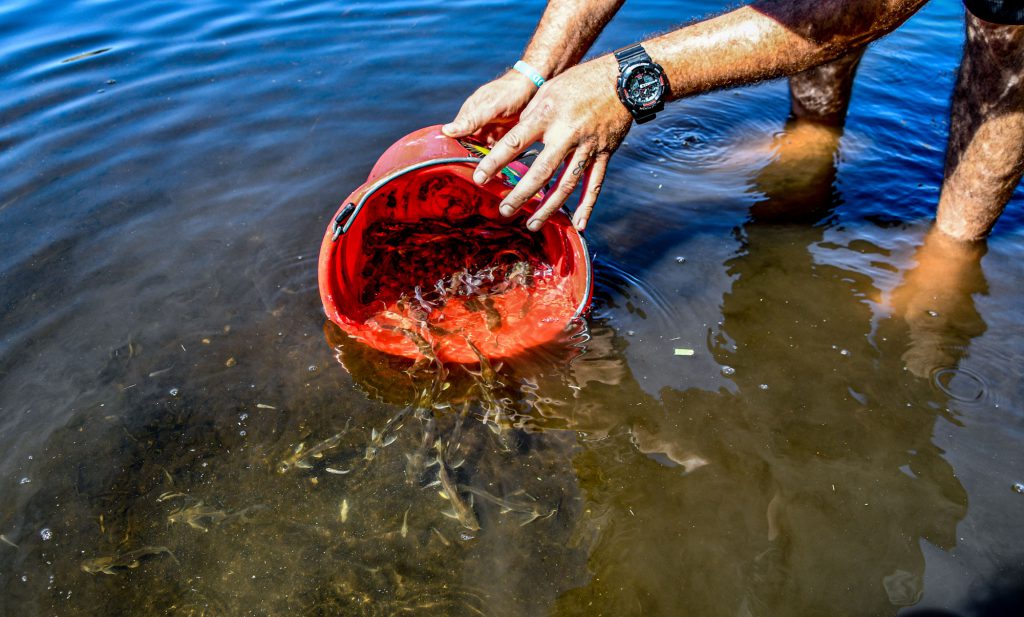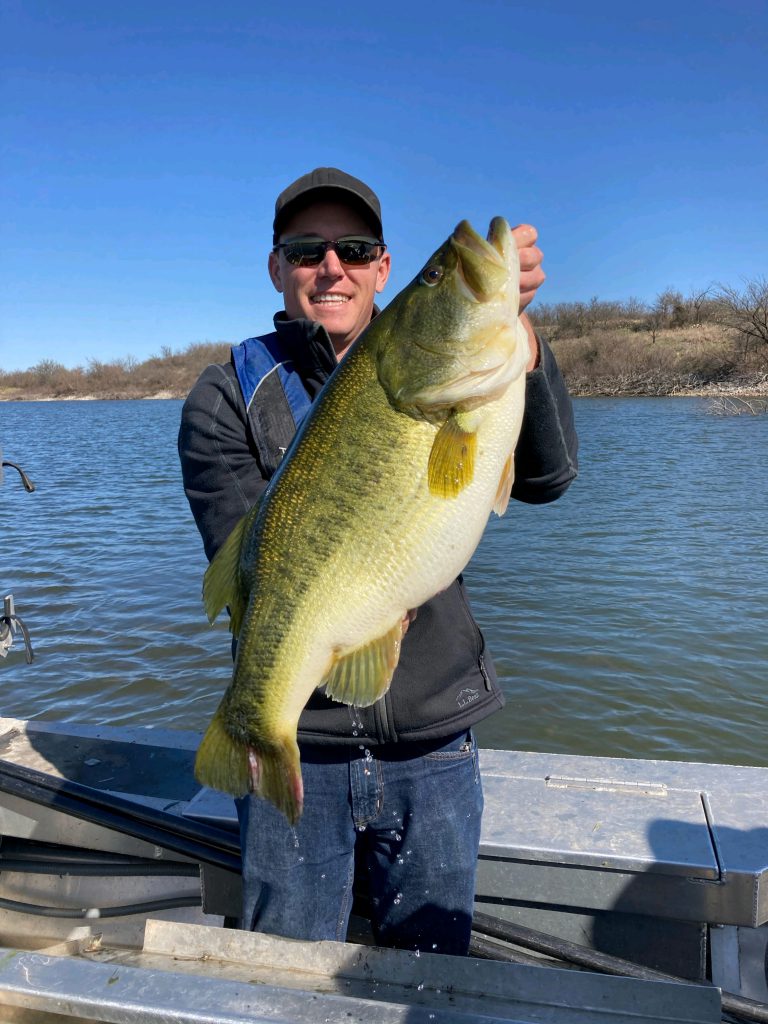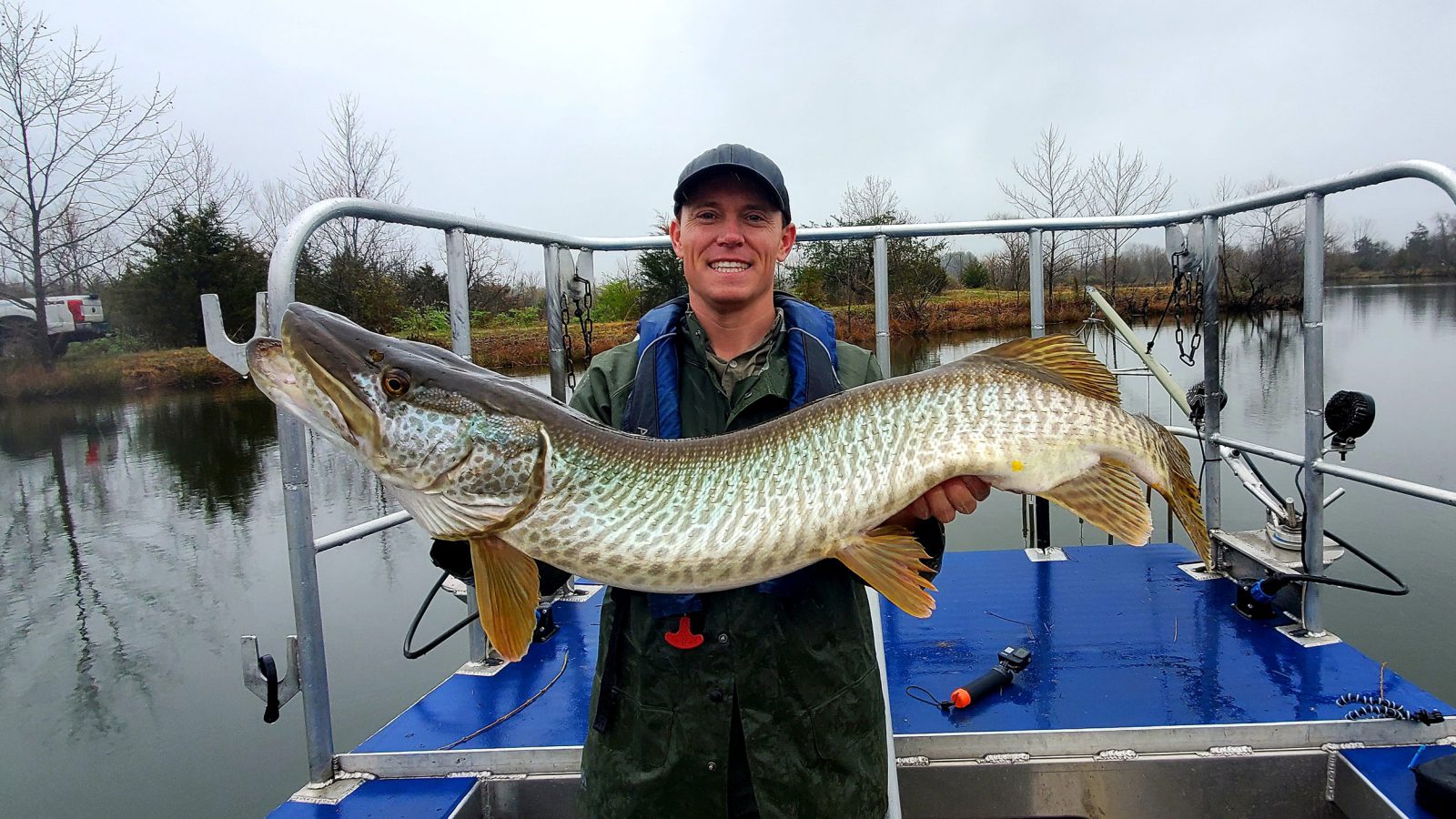
Strategic Trophy Fisheries Management
Whether you aim to create a more vibrant aquatic environment or establish a productive trophy fishery, fish stocking is an invaluable and highly impactful tool. No matter your short- or long-term expectations, it’s crucial to exercise best practices when stocking in Texas. Species type, predator-prey ratio, and seasonal considerations can all affect the achievement of your goals. With proper fish species selection, you can help ensure your fishery remains balanced throughout the year. Your patience and proactive efforts will be rewarded!
Fish stocking companies and fish farms in Texas often recommend stocking the following Texas freshwater fish:
Largemouth Bass
The Largemouth Bass is the indisputable king of freshwater sport fish, commonly stocked throughout Texas and the United States. Largemouth Bass are best suited for ponds one surface acre or larger as population management becomes difficult and expensive in smaller impoundments. Two sub-species are readily available. The northern subspecies (native to Texas) are characterized by cold tolerance and increased aggression or catchability. In contrast, the Florida subspecies are less tolerant of cold temperatures, but will typically grow faster and reach a larger size than its northern counterpart. Management goals, geographic location, timeline, and budget should be carefully considered prior to stocking Largemouth Bass. Further consideration should be given to size, age, sex, and diet history of stocked fish. Click for help in determining the best Largemouth stocking strategy.
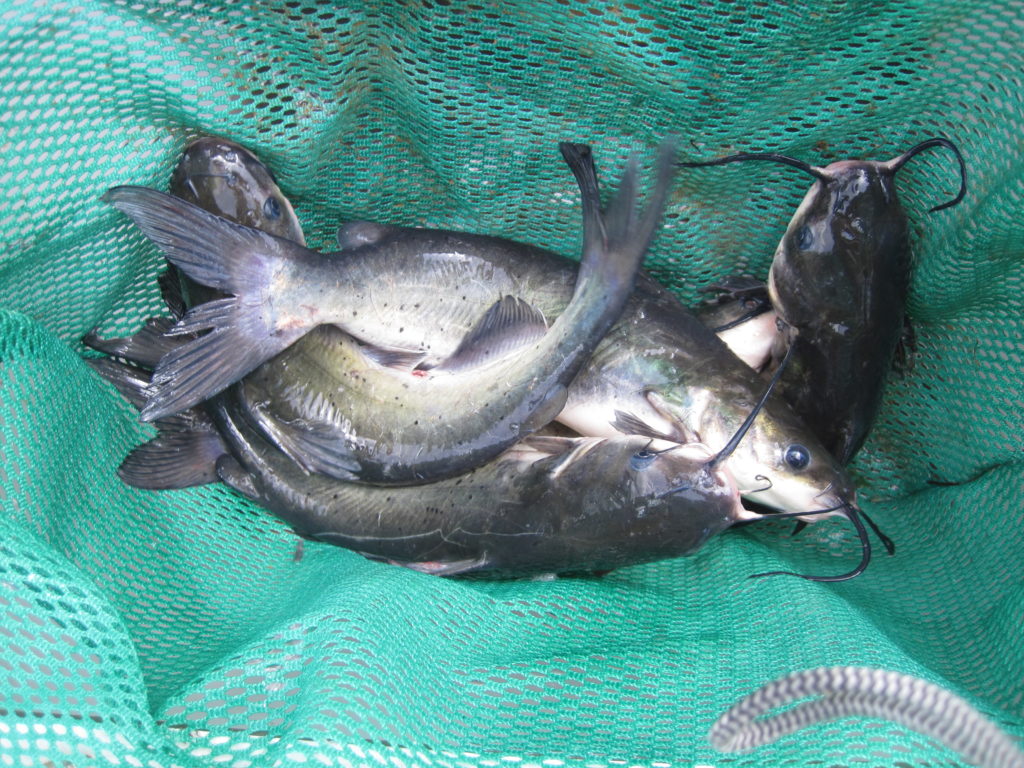
Channel Catfish
Channel Catfish are a great addition to almost any lake or pond and require very little management. This is a hardy species that will take well to pelleted feed or can be left to forage naturally on small benthic organisms and plants. Channel catfish grow best in warm environments and should reach one pound by 2 to 4 years old. Spawning success varies and depends highly on available habitat. Many pond owners prefer a put/grow/take approach to catfish management (fish are stocked, grown, harvested, and restocked as needed).
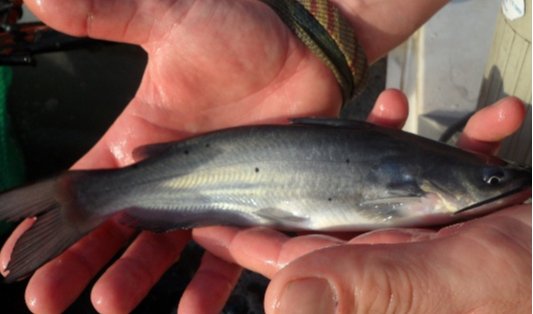
Blue Catfish
Blue catfish are the largest freshwater sport fish in the state of Texas. Highly productive waterbodies can support 50-100 individuals per acre while low productivity waters will support much lower densities. This species is not recommended for small systems. Blue Catfish exhibit high reproductive potential and while juveniles are highly omnivorous, adults are almost exclusively piscivorous. Dedicated harvest is an important component of successful management of Blue Catfish.
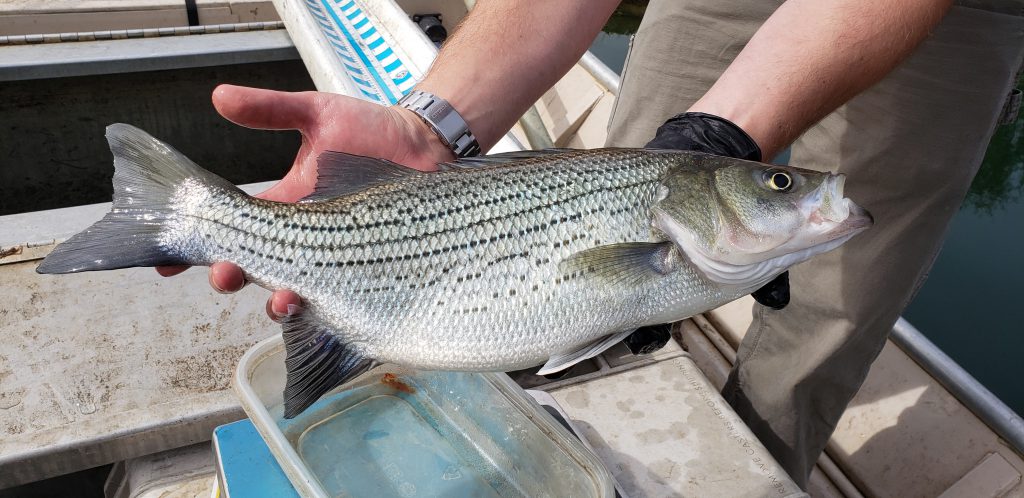
Hybrid Striped Bass
The Hybrid Striped Bass is a cross between a White Bass and a Striped Bass. Threadfin and Gizzard shad are the most common prey species for this open water predator, and hatchery raised fish are generally trained on floating pelleted feed. You can expect these fish to quickly reach 2 to 5 pounds with the possibility of reaching 10 or more pounds with the right conditions. The Hybrid Striped Bass offers great opportunities for sport and the dinner plate.
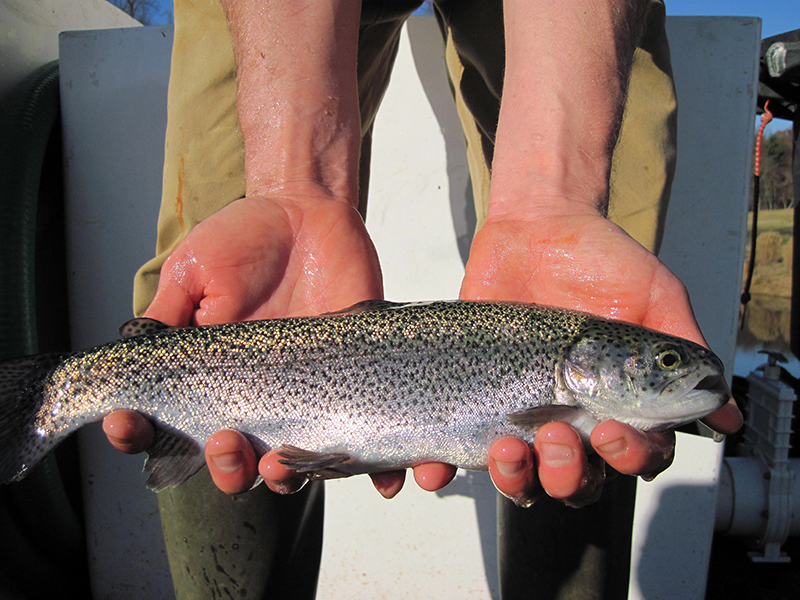
Rainbow Trout
Rainbow Trout offer a unique seasonal angling opportunity but don’t expect these fish to survive the Texas heat. If you are looking for great excitement and excellent table-fare during the coldest months, you may want to consider stocking trout. These fish are trained to eat floating pelleted feed and should grow well throughout the winter, but you should plan to harvest most individuals before water temperatures reach 70 degrees.
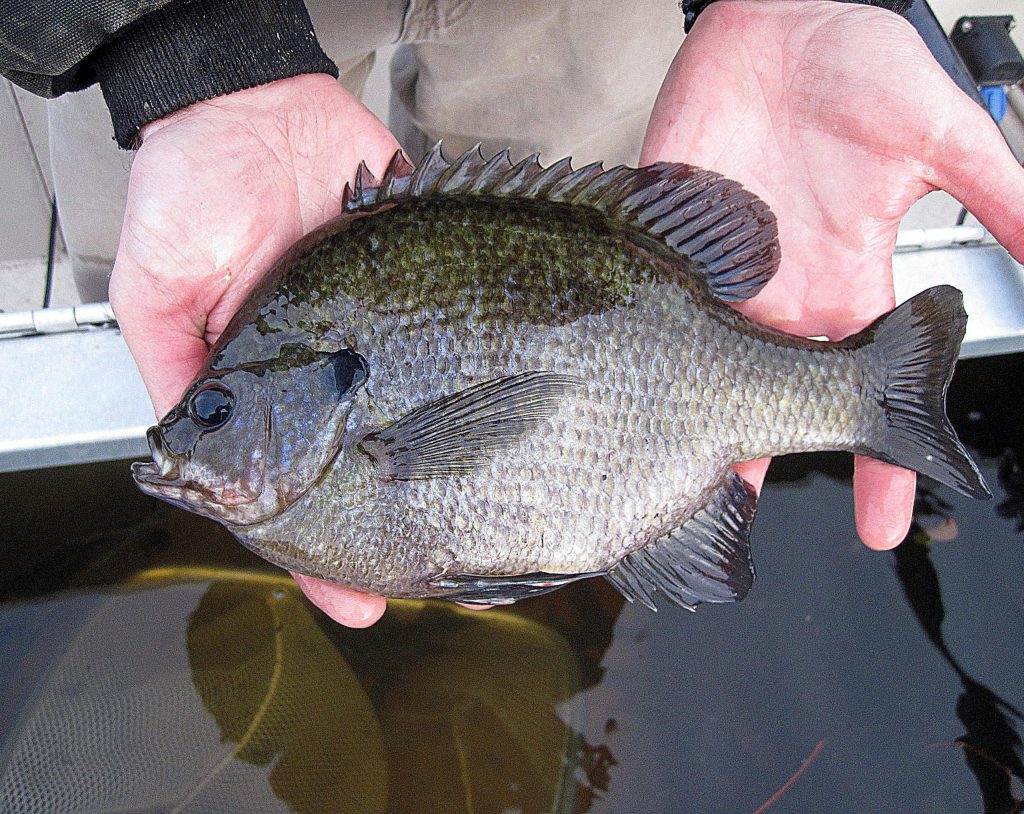
Coppernose Bluegill Sunfish
The Coppernose Bluegill, native to Florida and southeast Georgia, is a subspecies of the common Bluegill. With temperature limitations similar to that of the Florida Largemouth Bass, this species thrives in warm climates. Juveniles provide excellent forage for Largemouth Bass and with proper management, adults can reach sizes in excess of 2 pounds. Coppernose Bluegill will take readily to pelleted feed, and naturally feed on aquatic insects, worms, and small minnows. With an adequate food supply, they can easily grow a half pound annually. Coppernose Bluegill are an excellent addition to your pond that will provide forage for predators and excitement for anglers.
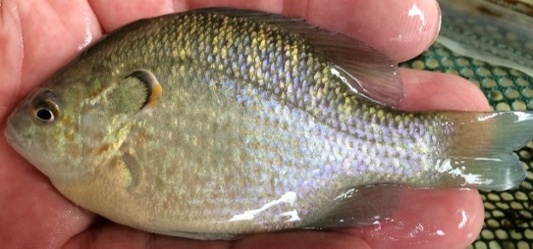
Southern Specklebelly Sunfish
The Southern Specklebelly Sunfish are ideal for small fishing ponds due to their skewed sex ratio, 95 to 100% males. They aggressively eat fish food, grow to large sizes, and are easy to catch. Individuals display some characteristics of both parent species with the added benefit of fast growth, large maximum size, and willingness to take pelleted food. Since this hybrid does not reproduce, the population will need to be maintained through continual stocking. These fish are a safe addition to any new or established waterbody.
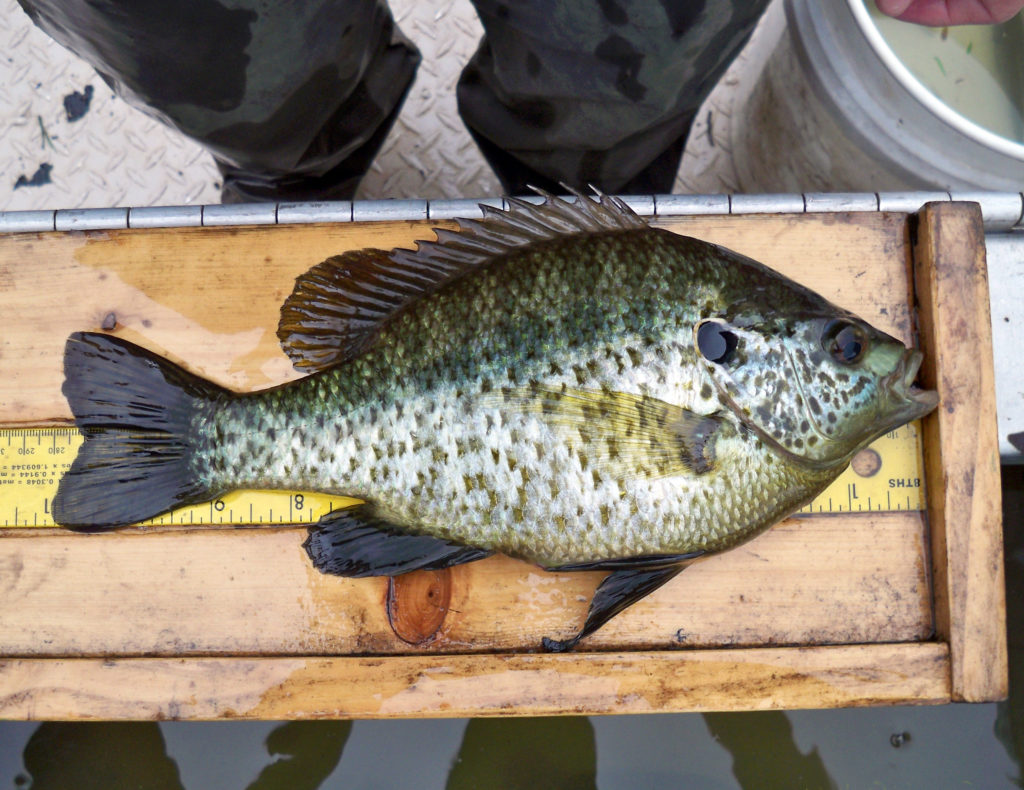
Redear Sunfish
Redear sunfish, also known as shell-crackers, are a great addition to any new or existing fishery. These fish feed primarily on aquatic insects, snails, and other mollusks, but not do not take well to pelleted feed. Within the pond community, Redear sunfish play an important role in suppressing common fish parasites such as the yellow and black grub that can affect catfish, bass, and other sunfish species. Redear sunfish spawn once per year in the spring and alone cannot produce sufficient numbers to sustain predator demand. For this reason, they are typically stocked in conjunction with Bluegill at a ratio of 15% Redear and 85% Bluegill. Adults can reach over 1 pound, providing excellent sport and table fare.
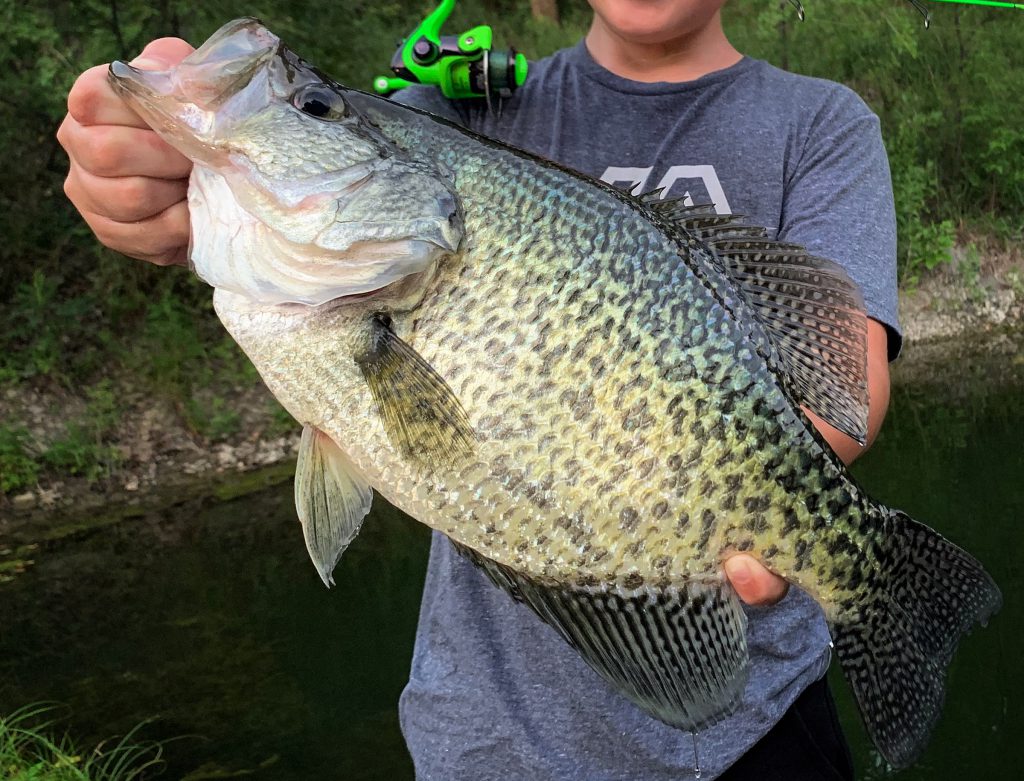
Black Crappie
Black Crappie can provide exciting angling opportunities and are always popular on the dinner plate. In general, this species is difficult to manage in lakes smaller than 20 acres. In smaller systems, Crappie can compete directly with Largemouth Bass and frequently become overpopulated, resulting in stunted growth. Carefully consider the goals of your fishery prior to stocking.
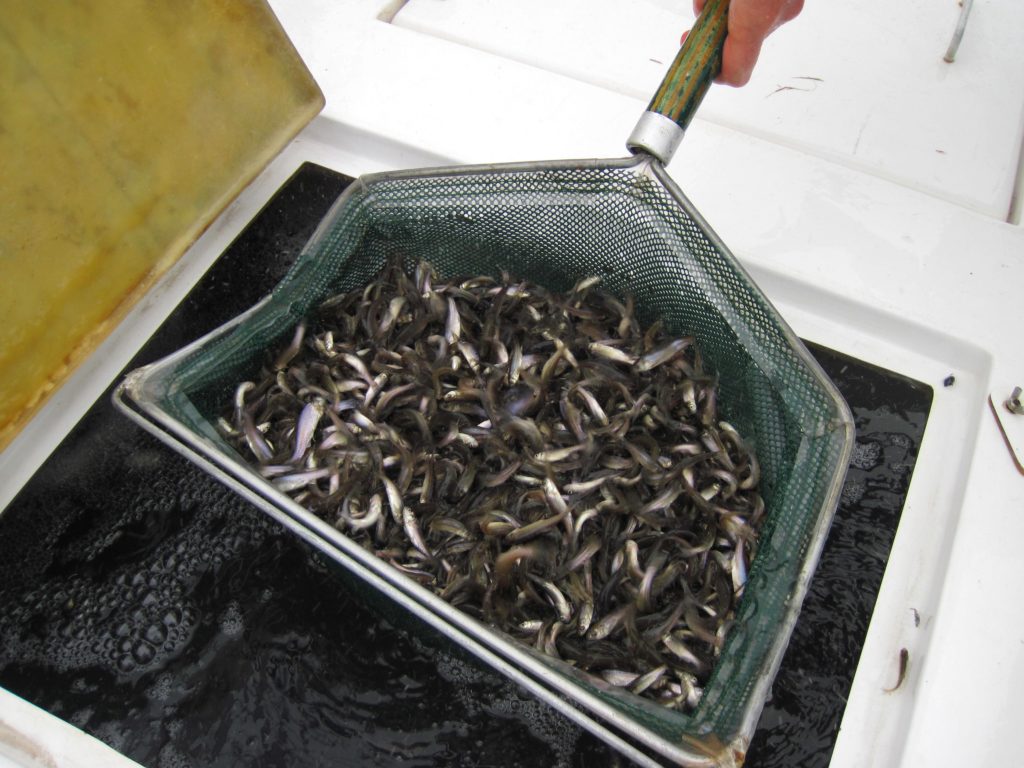
Fathead Minnows
Fathead minnows are best utilized when establishing a new or newly reset pond and are often stocked in conjunction with Bluegill and Redear sunfish. Spawning begins in the spring and continues throughout the summer, producing an abundance of forage for young Largemouth Bass. This species is not recommended for established fisheries as populations are often depleted by predation before a successful spawn can occur. Fathead minnows may also be utilized as part of an integrated pest management plan for stormwater retention ponds and other bodies of standing water by providing a natural solution to reduce mosquito reproduction.
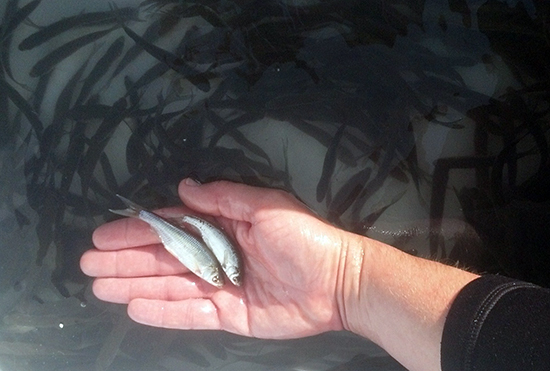
Golden Shiners
Golden Shiners are commonly used in the live bait industry and are an excellent choice in supplemental forage for Largemouth Bass. In newly stocked ponds, shiners should be stocked in conjunction with other forage species and given sufficient time to reproduce prior to introducing predators. Establishing a population of Golden Shiners where predators are already present will require higher stocking rates and dense refuge habitat.
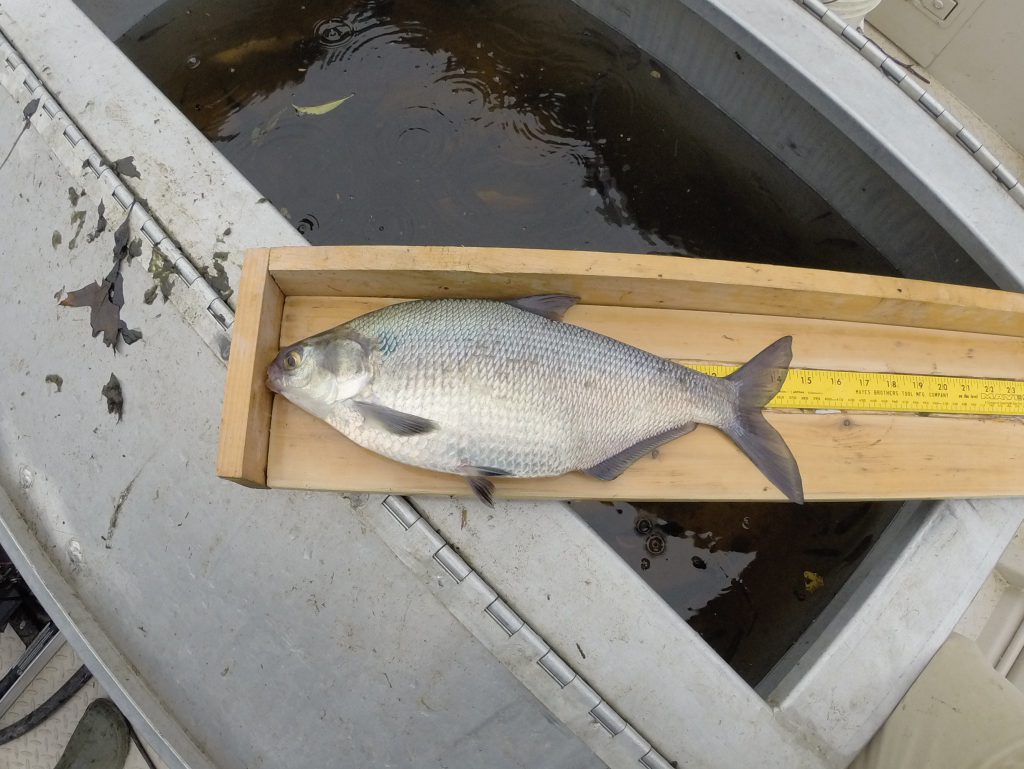
Gizzard Shad
Gizzard Shad are primarily utilized in the management of trophy-oriented bass and catfish fisheries. Due to their high reproductive potential, Gizzard Shad may disrupt the balance of a fishery without the presence of predators that control the population. Stocking is not recommended for lakes less than 15-20 acres. A pond fertilization program, along with careful management of the plankton community, should accompany the stocking of this forage species. Consult a lake management professional to determine if Gizzard Shad are a good fit for your waterbody.
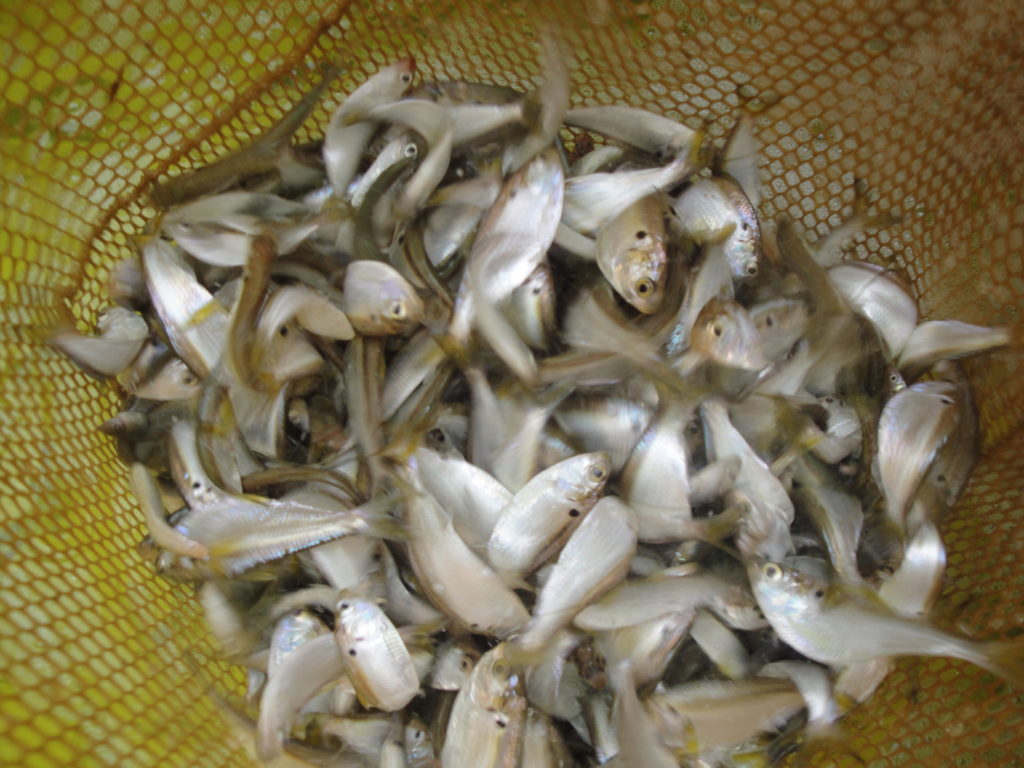
Threadfin Shad
Threadfin Shad are a highly productive schooling species and excellent forage for your Largemouth Bass. These fish reach sexual maturity at 2.5” and each female is capable of producing 10,000 eggs. Eggs are laid on shallow vegetation and hatch in 3 to 5 days. Threadfin Shad are open water filter feeders, consuming plankton throughout the water column. A pond fertilization program is important for all bait fish, but particularly when Threadfin Shad are utilized. This species is sensitive to changes in temperature and dissolved oxygen, leaving them vulnerable to predation and die-off during winter months.
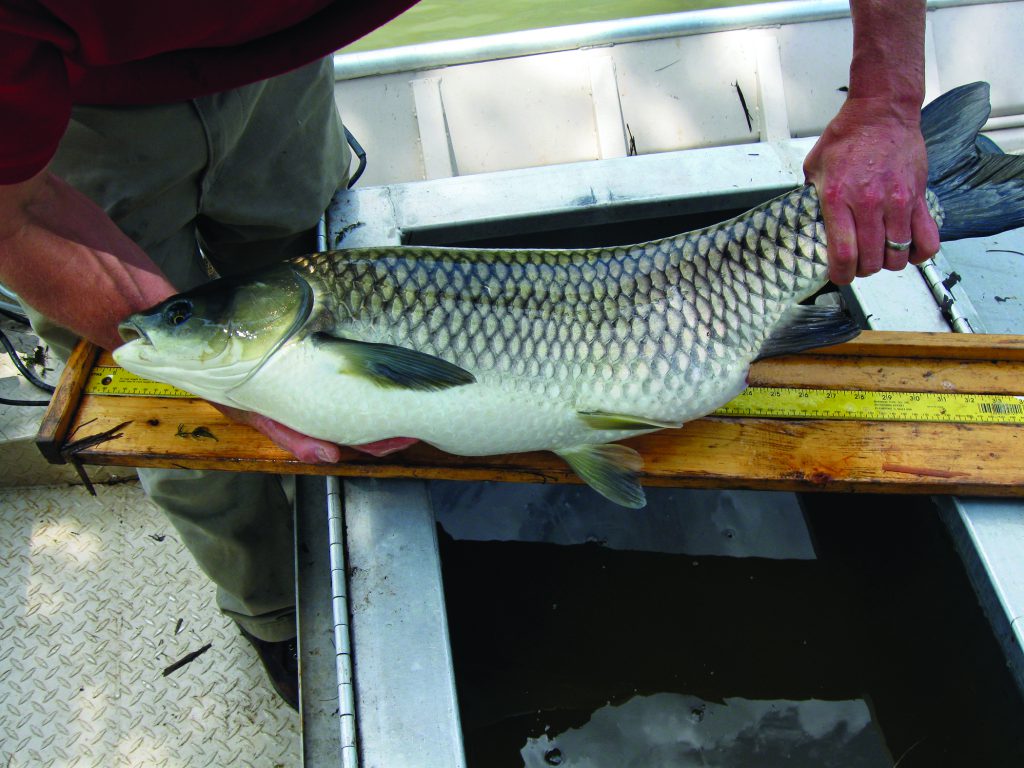
Triploid Grass Carp
Triploid Grass Carp are commonly used by pond managers as a tool to biologically control certain types of aquatic vegetation. These fish are known for their strictly herbivorous diet and voracious appetite, easily consuming their own body weight daily in vegetation. Stocking rates will vary depending on the species and density of unwanted vegetation. Individuals are sterile and will not reproduce. Regular stocking may be required as part of an overall vegetation management plan. Goals should be discussed with a lake management professional prior to introduction.

Mozambique Tilapia
The Mozambique Tilapia, a native of southern Africa, is the only tilapia species that may be legally stocked in Texas without a permit. These fish are utilized as biological control for certain types of nuisance aquatic vegetation and algae. Unlike Grass Carp, Tilapia will target filamentous algae in addition to floating species such as duckweed, watermeal, and azolla. This species is temperature sensitive and will not withstand temperatures below 50 degrees. In the southern part of the state, Tilapia can overwinter, reproduce, and become problematic. It is best to consult a lake management professional prior to stocking Mozambique Tilapia.








